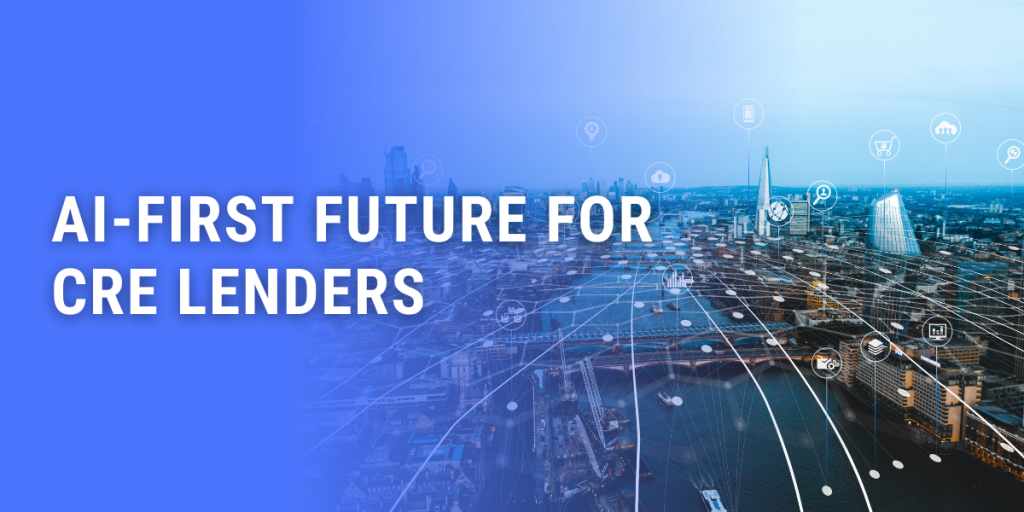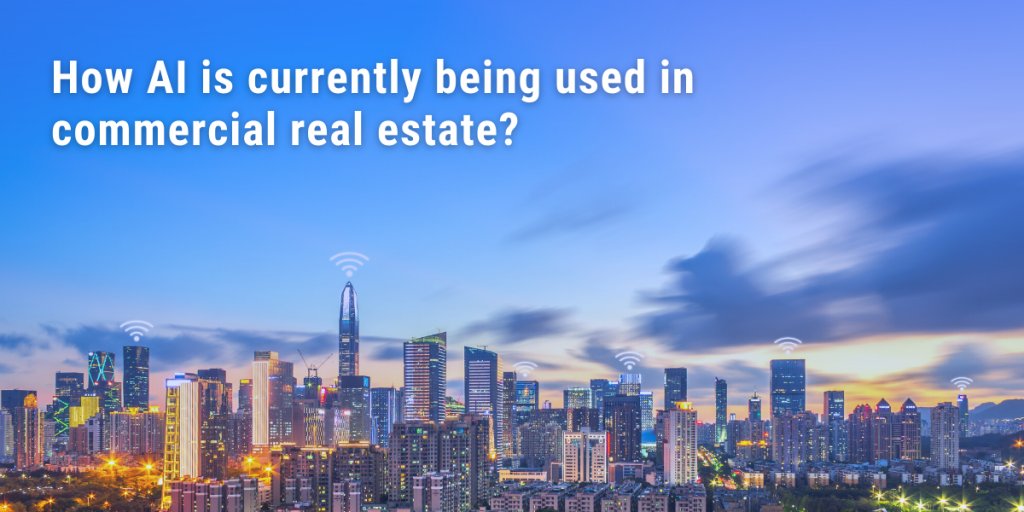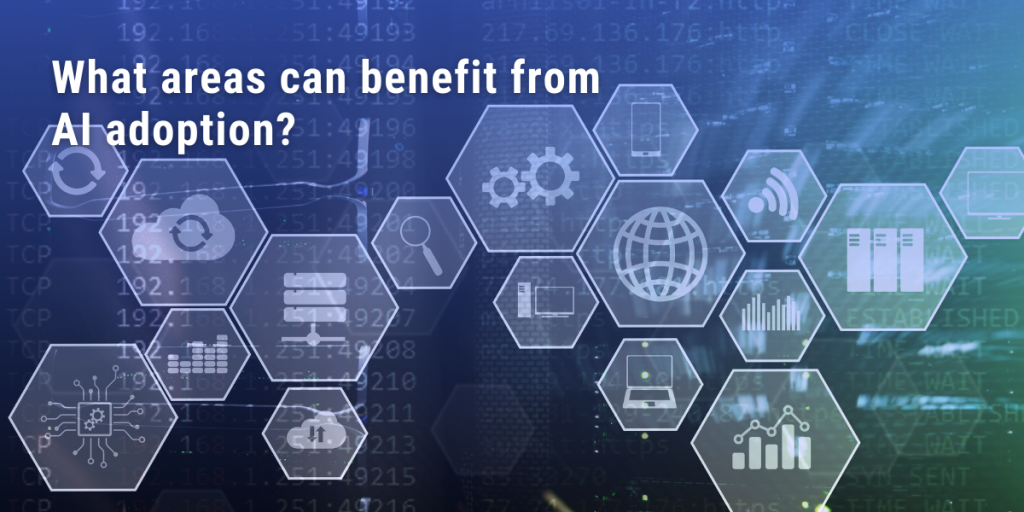Here’s What an AI-first Future Looks Like for Commercial Real Estate Lenders

The adoption of AI will be a make-or-break scenario for many commercial lenders — they must adapt or they risk losing a share in the market.
The real estate industry is undergoing its biggest transformation yet — the wide adoption of Artificial Intelligence (AI) and automation is disrupting how different aspects work. These emerging technologies and innovations have resulted in new ways to boost productivity, reduce the need for manual labor, and increase the efficiency of systems and processes.
AI is believed to be the most significant catalyst for change in the commercial real estate industry in recent years. It continues to have the potential to influence how different facets of the industry work, from how property investors look for the right location to how commercial lenders assess the risk of potential borrowers.
How AI is currently being used in commercial real estate

AI and automation are now being widely applied in several aspects of the commercial property market. Here are five market areas currently being transformed by AI and automation:
Project management
Developers and builders are increasingly turning digital to monitor their projects. With AI, they can easily track project developments and monitor deficiencies.
Procore is an example of project management software that runs on AI. It has a range of project management tools for main contractors in the commercial real estate space and has a mobile management software that allows for a virtual collaboration between workers on site and in the office. This tool can be used at any stage of the project, from tendering to client management, and document storage and transmittal.
Client relationship
AI is also increasingly being used to improve client relations. Clientlook and HqO are two examples that utilize AI in forging client relationships.
Branding itself as an all-in-one commercial real estate CRM, Clientlook aims to lighten the workload of brokers, investors, and property owners by taking the burden of data entry off their shoulders. The tool has several features that can help investors track property ownership, monitor tenant movements and lease expirations, and manage listings. Investors and property owners can also rely on the mobile version of the software to take their business on the road.
Meanwhile, HqO provides tools that can help property managers deliver the best experience for their tenants. It connects managers and tenants through a centralized platform known as HqOS, which can be used via mobile app or desktop access. Property managers can also utilize the Digital Grid tool in analyzing tenant behavior and sentiment.
Marketing
The social distancing and travel restrictions amid the COVID-19 pandemic have pushed the creativity of property developers and investors in presenting their assets to potential clients. With 3D models and virtual tours, investors can navigate and inspect the properties without needing to be physically present. Matterport provides a 3D platform that enables users to capture their properties and create an immersive virtual reality space, all with the help of AI. Other uses of AI in marketing include customize email campaigns, chatbots, and interactive online advertisements.
Due diligence and data gathering
Savvy property investors are now harnessing the power of AI in making crucial investment decisions. Smart Capital Center is a one-stop shop for investors looking to break into the commercial property space. It can provide insights about specific markets and can even deliver bank-quality valuation on properties in particular areas. The platform can also connect investors to potential lenders and present financing options fit to their needs.
Underwriting and risk assessment
Perhaps one of, if not the biggest use of AI in commercial real estate is underwriting and credit risk assessment. AI-powered platforms like SpaceQuant caters to the needs of lenders and servicers for a more efficient way in analyzing risks and exploring potential options. With SpaceQuant, lenders and servicers can allot the time they typically spend for the most mundane tasks of data entry and initial data analysis to other pressing issues that need their attention, including risks and mitigation.
How commercial lenders can take advantage of AI

There is no denying the power big data holds — it has become a valuable resource in the commercial real estate lending industry, and the use of AI and machine learning will surely equip lenders with the necessary tools to make the most out of the plethora of information.
AI has the potential to significantly improve three major areas in the process of CRE lending and underwriting: lead creation, loan assessment, and monitoring.
AI can help increase deal flow
AI can help commercial lenders process massive amounts of information to find the ideal candidates for their businesses. With its ability to triangulate different sources of data (ranging from government-related information, credit history, and spending habits), AI can produce a roster of potential clients for commercial lenders for specific loan products, making it easier for them to track leads.
AI can also help commercial lenders make targeted campaigns for their prospect clients. The technology can give them the power to customize their marketing strategy, making sure that they reach specific groups that they wish to tap into.
These two things allow AI to increase deal flow, providing commercial lenders more opportunities to reach their target clients and open new streams for leads.
AI addresses pains in risk mitigation
Risk assessment is also a big area which will continue to benefit from AI. Commercial lenders typically spend time and resources just for a single task of assessing the risks of loan applications but with AI, they can already run a thorough check on borrowers’ credit history and tag any potential risks.
Most AI software and platforms are now using a score-based system to assess borrowers’ capacity for a loan. This score, however, is based on several data that make up the borrower’s profile, not just on the current cash flow. This means that smaller borrowers who would otherwise struggle finding a business loan now have an opportunity to apply for one with the help of AI.
During the loan application phase, AI and machine learning can be used to make sense of historical data patterns, allowing commercial lenders to understand either how they can cater to the specific client or if declining an application is the best option.
Under the typical credit risk origination process, commercial lenders usually face uncertainty when it comes to data quality and availability. Concerns on accuracy typically rise, as risk assessment is often done based also on other qualitative metrics given the limited data.
To solve this issue, AI makes use of its own algorithm to assess risks based on historical data, providing an avenue for the lender to have a deeper understanding of the borrowers’ credit behavior. This, in turn, will result in a greater predictive power for the lender.
A hotel investor or owner, for instance, might face challenges securing a loan amid the current landscape. The hotel industry has been the most affected investment space over the COVID-19 pandemic. As borders remain closed and travel remain restricted, any recovery in the industry is expected to be gradual.
If the traditional credit-risk assessment lenses are used, then it is likely that commercial lenders might see a borrower from the hotel industry as high-risk, ultimately rejecting them. AI, on the other hand, can utilize existing data to determine the creditworthiness of a hotel investor in a post-COVID world, allowing for lenders to consider other options.
AI makes monitoring efficient
Commercial lenders can also depend on AI in making their monitoring processes efficient. With the power of AI, lenders are now past the time when they can only rely on near-term data — they can now predict and identify potential risks ahead of time with improved accuracy. This way, lenders can already make the necessary actions to minimize the risks of a potential default from the borrower.
Alternatively, the early detection of red flags creates an avenue for lenders to reach out to their clients and work out an alternative solution, either through trade credit or new payment arrangements, to avoid a default.
What areas can benefit from AI adoption

AI is already past its infancy, but it certainly is an ever-evolving concept for most lenders particularly in the commercial investment space. It has kickstarted a massive shift in the lending industry — the use of predictive analysis is transforming how lenders are growing their business and improving their services, making the industry competitive. Commercial lenders can instantly witness a change in the following areas the sooner they embrace AI:
Cost management
AI enables lenders to realize the full potential of their workforce. AI and automation will significantly improve processes as manual tasks are reduced. This makes it feasible for lenders to focus on high-value tasks and be more hands-on with their clients.
Reduced processing times application times, for instances, means the lender has time to accommodate more potential clients in its books. Costs will also be trimmed significantly, as commercial lenders prevent risks and potential losses by utilizing the accuracy of AI’s analysis.
Scope and scale
It is advantageous for commercial lenders to have AI as part of their processes. The impressive amount of data AI and automation can crunch and interpret will be able to help banks make better and more informed decisions. Furthermore, AI opens the possibilities for creating more tools that are flexible enough to do wider range of tasks, from marketing, credit risk assessment, to sales.
Continuous learning
Just like the human brain, AI will be able to learn and retain new information making it adapt to the ever-changing industry standards. As it expands its industry knowledge, it can continuously improve processes, enhance systems, and develop its decision-making abilities.
How an AI-first lender looks like
In the next few years, there will be a rapid adoption of AI technologies across financial institutions. AI will be the backbone of lenders, allowing them to push the limits in terms of growing their businesses and making sure that their services remain relevant and diverse.
An AI-first lender will be a digital native — it will utilize the omni-channel strategy to establish seamless connection with its clients. Furthermore, it will be able to personalize its services based on the client’s needs and circumstances.
On the operations side, an AI-first lender will always prioritize the efficiency of its processes to eliminate errors, lower costs, and boost revenues. As AI overtakes manual processes, its human resource will be able to focus on tasks that would uncover new opportunities for growth.
Lastly, an AI-first lender will be collaborative. It will engage with different partners, harnessing each other’s AI capabilities to deliver new value proposition. Rapid innovation will be common, as it can quickly think of new ways to improve its processes and develop fresh products and services.
Conclusion — AI is here to stay and disrupt
The adoption of AI, machine learning, and automation will be a make-or-break scenario for many commercial lenders in the real estate space. For these lenders to stay relevant and be able to keep up with their peers, they must ensure that they are up to date with the ongoing trends that have been shaping credit risk management and underwriting process. Not only will they be able to enhance their services and reach the right clients, they will also be able to lower losses, mitigate risks, and improve their profit margins more efficiently.
Learn how SpaceQuant’s AI Technology can help transform your company’s productivity gain by up to 80%.
